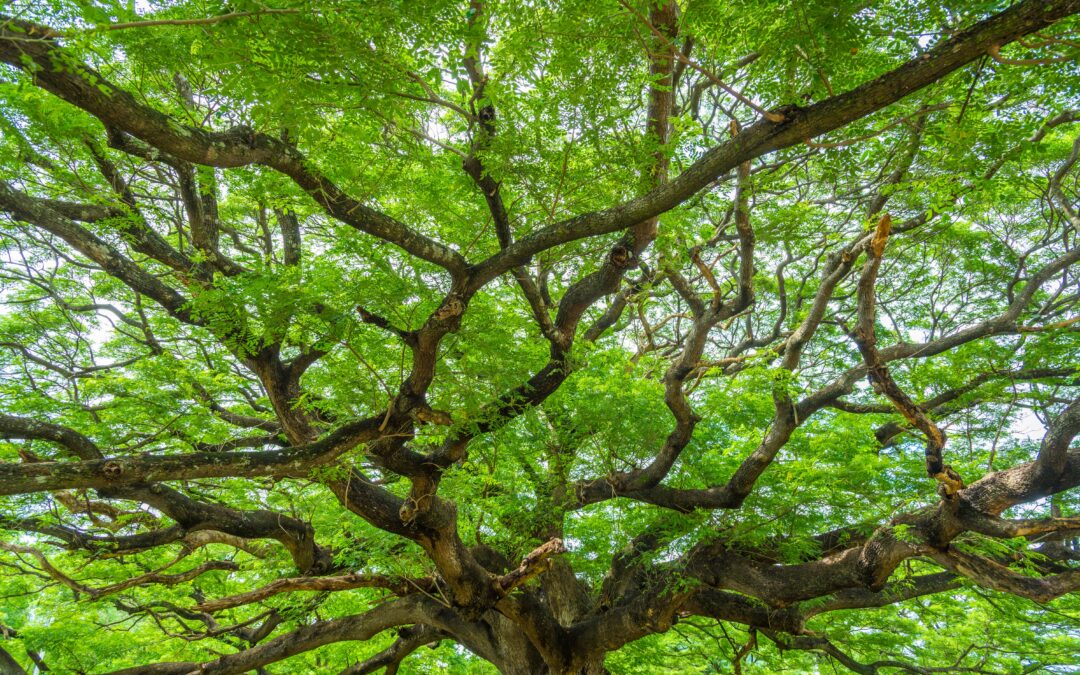In the verdant expanse of the Santa Cruz Mountains, a pioneering initiative for environmental stewardship has taken root. The Santa Cruz Mountains Stewardship Network (SCMSN), a collaborative of 25 entities, embodies an innovative approach to land stewardship, uniting many of the region’s conservation groups, government agencies, academic institutions, private landowners, and Indigenous communities in an effort to care for a region with a million acres of awe-inspiring landscapes, redwood forests, and ecological treasures.
The Network uses an emergent strategy: It brings member organizations together to discuss issues — fire, forest health, water quality, climate adaptation — and through that interaction discovers opportunities to collaborate on specific projects and programs. The SCMSN is the container in which member organizations can build relationships, generate ideas, and move ideas into action.
Even though the network helps to combine brain power and enhance conservation in our region, this type of collaborative model is often difficult to secure funding for — especially in traditional philanthropic circles.
The Network at Work
In August 2020, the Santa Cruz Mountains experienced a stark demonstration of the ecosystem’s vulnerability — and the immense value of a collaborative that fosters innovative stewardship strategies and regional cooperation — when the CZU Lightning Complex Fire swept through these ancient woods, incinerating over 86,000 acres, including swathes of the iconic Big Basin Redwoods State Park
In the years following the catastrophe, the fire has dominated land stewardship concerns in the region. The Network has provided a forum where members are inspired to combine their expertise and assets to meet the challenges created by the fire — enhancing individual group efforts and enabling more robust protection and preservation of the region and those who call it home.
By engaging in dialogue, sharing updates on projects, and building mutual trust, SCMSN members have initiated hundreds of collaborative land stewardship projects since its formation in 2014. Many collaborative fire prevention and forest health projects have grown out of the network, like the restoration of 180 acres of land in an area that was historically an indigenous village by the Amah Mutsun Land Trust, California State Parks, and the San Mateo Resource Conservation District. The SCMSN also developed a groundbreaking Vegetation Map of the region which, funded by Network members, foundations, and the State of California, combines high-resolution imagery and detailed botanical data to create an indispensable resource for land stewardship. Organizations across the Santa Cruz mountains, including Cal Fire and California State Parks, use it to make decisions about land management — from planning large, controlled burns that reduce fuel loads, to strategizing the conservation of butterflies.
A Fundamental Funding Disconnect
The SCMSN has been key for increasing the pace and scale of stewardship in the region, and yet funding the network is a challenge. Collaboration requires organizing and facilitation capacity. A network provides the connective tissue that allows organizations to work together across jurisdictions and property lines. Philanthropic conservation funding tends to be oriented toward discrete projects. Networks do the foundational work that allows collaborative partners to discover and define the work they might do together. Project-oriented funding doesn’t tend to cover that part of the work.
A network coordinator for a network in Colorado, frustrated by this funding difficulty, asked me how I communicate the value of networks to funders. I answered that I didn’t think it was the right question. Every funder I’ve ever spoken to recognizes the value of the SCMSN. Nonetheless, the network’s core activities don’t fit into current funding structures or program areas. Funders tend to want to fund discrete projects with beginnings and ends but networks are about tending to ongoing relationships. It is ecosystemic work — a different paradigm — which, as has been pointed out on this blog before, may require funders to shift their mindsets away from traditional models.
The Network as a Collaborative Model
While we may face funding difficulty, in the face of an escalating climate crisis, the SCMSN’s collaborative model is more than an asset to conservation efforts in the Santa Cruz Mountains; it’s a practical template for scalable solutions everywhere. Through collective action, diverse expertise, and community involvement, substantial environmental advancements are within our reach.
As we confront the daunting challenges of climate change, wildfires, and biodiversity loss, the SCMSN’s collective endeavors stand as a testament to what can be achieved through unity and innovation. By combining resources, exchanging knowledge, and mobilizing communities, we can significantly amplify our environmental stewardship. The success of this approach — which applies to environmental stewardship and advocacy as much as to other forms of advocacy — is a clarion call to action for funders and policymakers: Investing in collaborative networks like the SCMSN is an investment in the health of our planet and the legacy we leave for future generations.
Dylan Skybrook is the Manager of the Santa Cruz Mountains Stewardship Network. In addition, he sits on the Steering Committee of the California Landscape Stewardship Network and is a founding member of Collaborating Well — a collaborative leadership educational effort.


